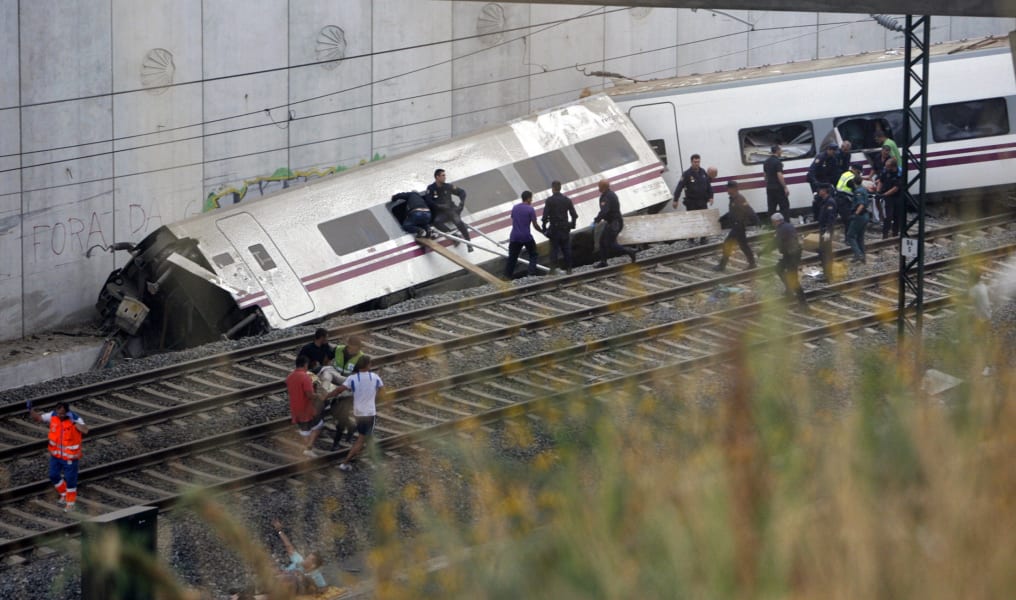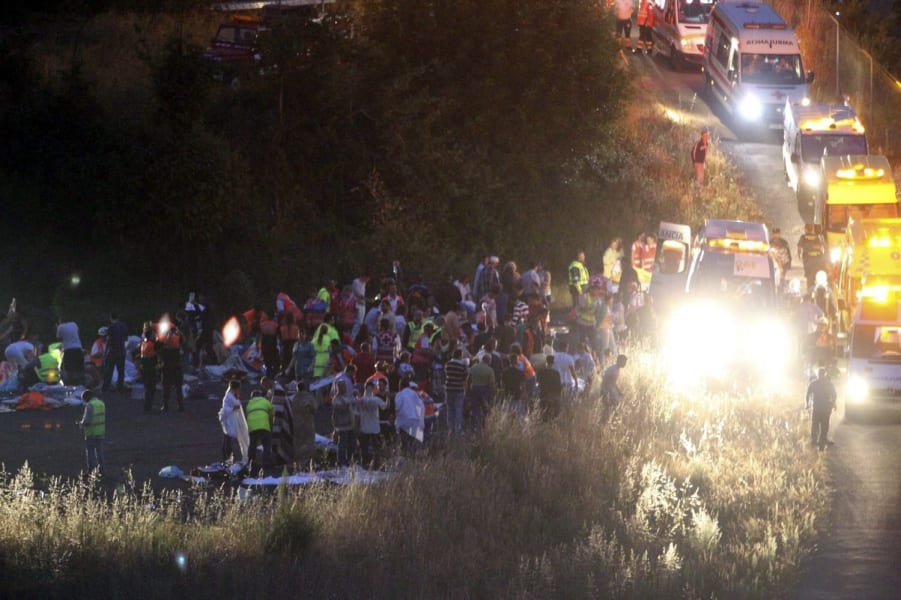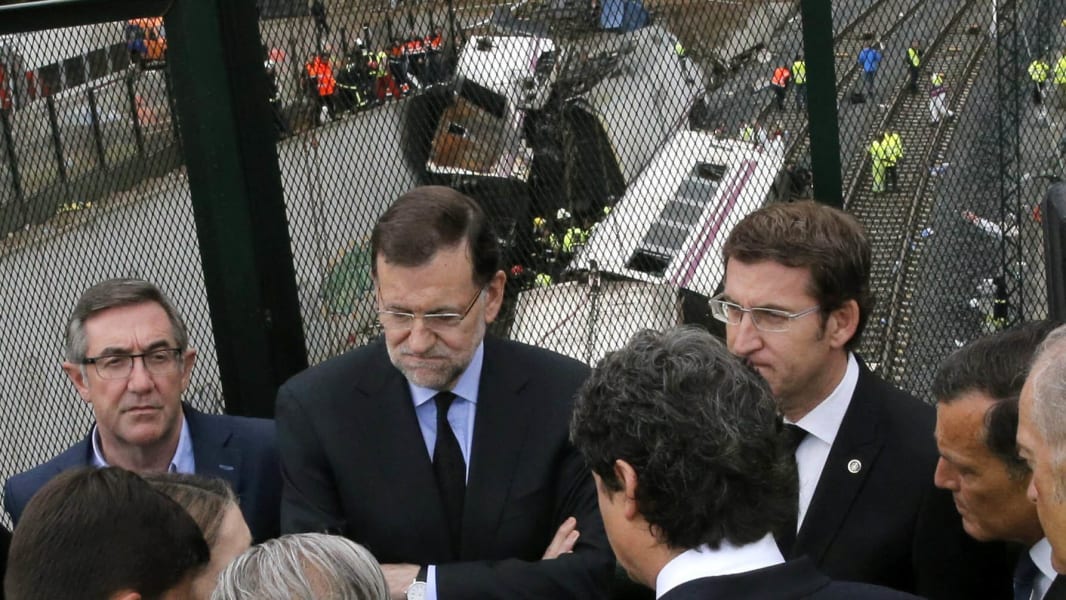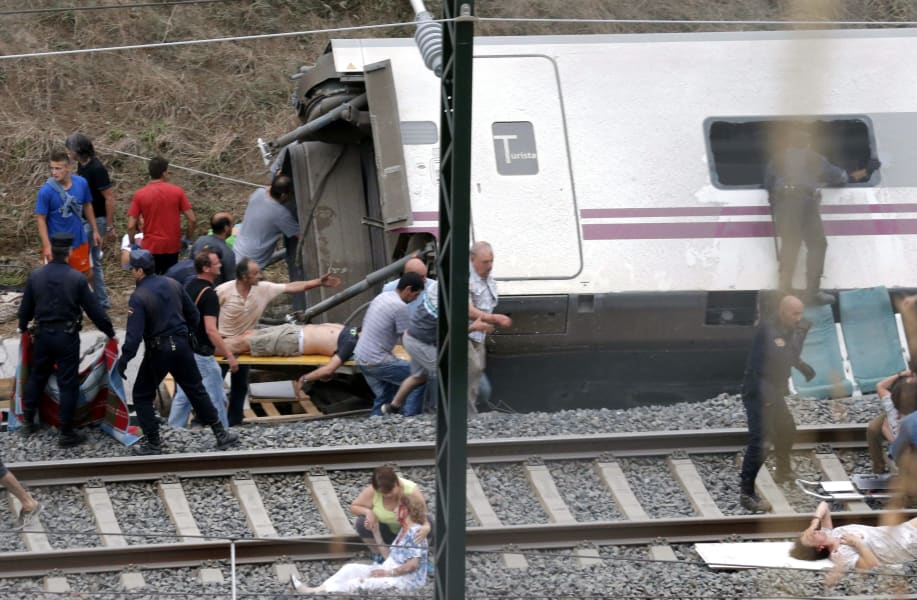Share
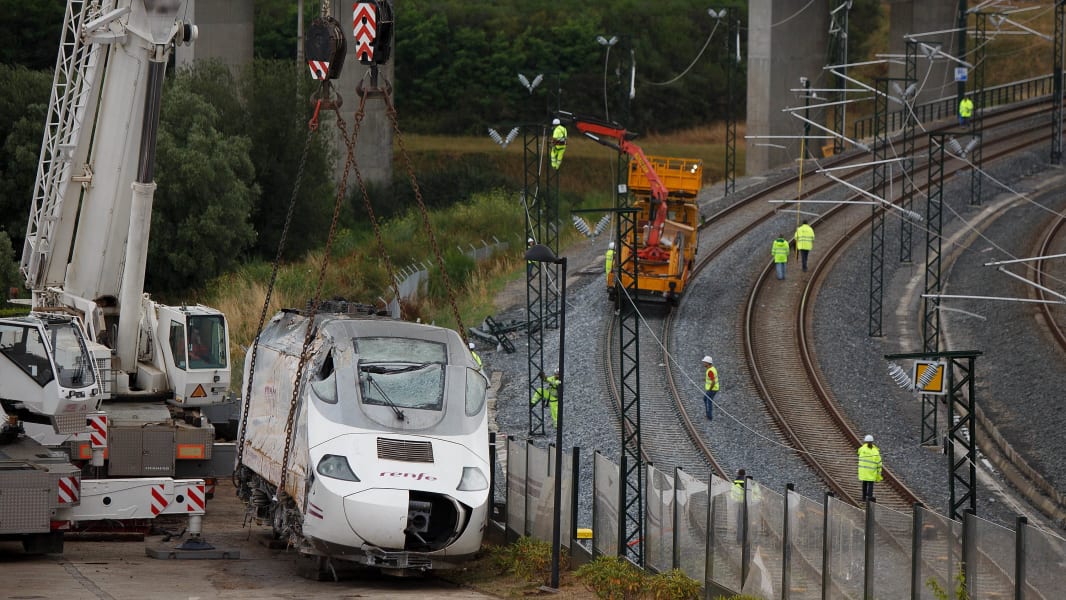

1 of 26
Wreckage of the front locomotive of a derailed train stands on the road while workers repair the railway on Sunday, July 28, in Santiago de Compostela, Spain. A spokeswoman for the Galician regional government said that at least 79 people were confirmed dead in the train crash. It occurred on the eve of a public holiday, when more people than usual may have been traveling in the region. Pablo Blazquez Dominguez/Getty Images
Train driver Francisco Jose Garzon is taken from a police station to the Preliminary Court in Santiago de Compostela on July 28. Pablo Blazquez Dominguez/Getty Images
Spanish Prime Minister Mariano Rajoy, second from left, and Galicia's regional President Alberto Nunez Feijoo, right, visit the site of the derailment on Friday, July 26. LAVANDEIRA JR./AFP/Getty Images
Injured people are evacuated at the site of the July 24 train accident. The driver of the train is being held, Spanish police said July 26. La Voz de Galicia/Monica Ferreiro/AP photo
A train car is lifted Thursday, July 25, at Angrois near Santiago de Compostela, Spain. The train derailed as it hurtled around a curve at high speed on Wednesday, July 24. Pablo Blazquez Dominguez/Getty Images
Emergency personnel work at the crash scene July 25. An investigation into the cause of the derailment is under way. Pablo Blazquez Dominguez/Getty Images
Spanish Prime Minister Mariano Rajoy, center, visits the crash site July 25 with Public Works Minister Ana Pastor, right, and Alberto Nunez Feijoo, head of the regional government in Galicia. The latter declared seven days of mourning for victims of the crash.
SALVADOR SAS/EPA/LANDOV
SALVADOR SAS/EPA/LANDOV
A relative of one of the passengers waits to hear news in Santiago de Compostela on July 25. David Ramos/Getty Images
Other relatives of passengers wait for information in Santiago de Compostela on July 25. David Ramos/Getty Images
Rescue workers inspect a carriage in the wreckage July 25. MIGUEL VIDAL/Reuters/LANDOV
A general view of the derailment in northwestern Spain on July 25. LAVANDEIRIA JR/EPA/LANDov
Emergency workers at the derailment scene July 25. SALVADOR SAS/EPA/LANDOV
Emergency personnel evacuate a man at the scene July 25. Antonio Hernandez/El correo Gallego/ap
Emergency workers help passengers July 25. Antonio Hernandez/El correo Gallego/ap
Women wait for news about crash victims in Santiago de Compostela on July 25. Salome Montes/ap
Teams at the crash site July 25 expect to find more bodies, an official says. OSCAR CORRAL/EPA/LANDOV
The train was on its way from Madrid to the town of Ferrol with more than 200 passengers aboard. OSCAR CORRAL/EPA/LANDOV
Train driver Francisco Jose Garzon, identified by Spanish newspapers El Pais and El Mundo, is helped from the scene by a police officer. Oscar Corral/REUTERS/LANDOV
The state railway company said the train derailed on a curve as it was approaching the train station in Santiago de Compostela. LAVANDEIRA JR/EPA/LANDOV
Emergency workers climb on top of the wreckage as they help free injured passengers from the crash. LAVANDEIRA JR/EPA/LANDOV
While it was unclear how fast the train was going at the time of the crash, it was capable of reaching up to 155 mph. LAVANDEIRA JR/EPA/LANDOV
Rescuers work to pull victims from the derailed cars. Oscar Corral/REUTERS/LANDOV
One person at the scene said he saw several passengers and witnesses helping get people out of the mangled cars. LAVANDEIRA JR/EPA/LANDOV
Rescuers work to clear a derailed car. Oscar Corral/REUTERS/LANDOV
"The efforts now center on searching for bodies and victims that could still be alive in the wreckage of the cars," journalist Ignacio Carballo from the Voz de Galicia newspaper told CNN en Español. SXENICK/EPA/LANDOV
Officials said blood donations were needed as a result of the crash. SXENICK/EPA/LANDOV
